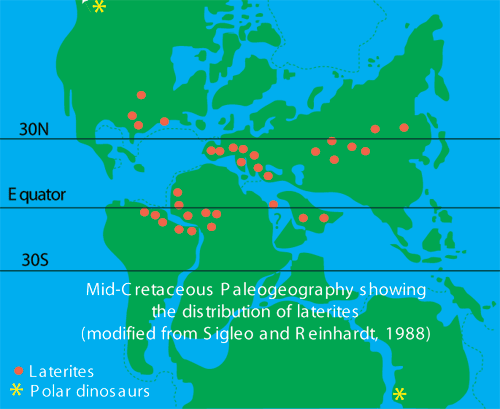Activity
In this assignment, you will begin to explore the links between paleoclimatology, the Critical Zone, and modern society.
Directions
- View the short video entitled "Earth System: Ice and global warming" (See transcript) and the slide shows entitled "Glaciers" and "Documenting glacial change."
As you view these visual resources, consider the following questions.- Do glaciers play any role in parent material aspects of soil formation? If so, what role?
- How might sea level variations associated with the waxing and waning of glacial ice sheets affect soil formation?
- How might Critical Zone processes be altered in regions not covered by but near to glaciers?
Consider each of the state factors of soil formation in this manner.
- Having viewed the video and considered the leading questions, visit the Pennsylvania Topographic and Geologic Survey Web site to learn more about glaciation in Pennsylvania.
- Follow the link to Map 59, "Glacial deposits of Pennsylvania," near the bottom of the page.
- Briefly describe, in no more than two double-spaced pages, your thoughts on the aforementioned leading questions applied to Pennsylvania (if you are not from Pennsylvania, feel free to pursue a similar activity for your home state, but please clear this with me first!).
Next, carefully study the map below, then learn more about laterites. Mid-Cretaceous refers to a broad expanse of geologic time from ~120,000,000 to 85,000,000 years ago, when the planet was generally much warmer than today with, for example, dinosaurs stomping around in sub-tropical forests near both poles. As you read about laterites you may want to refer back to knowledge gained in our lesson on soils and soil orders, specifically the geographic distribution of oxisols.
 Map of Mid-Cretaceous Paleogeography showing the distribution of laterites.Image source: Dr. Timothy White, The Pennsylvania State University, 2008. Modified from Sigleo and Reinhardt, 1988)
Map of Mid-Cretaceous Paleogeography showing the distribution of laterites.Image source: Dr. Timothy White, The Pennsylvania State University, 2008. Modified from Sigleo and Reinhardt, 1988)- Continue the document you began for Step 4, above, by answering the following questions in no more than one additional double-spaced page:
- What do you notice about the distribution of laterites during the Mid-Cretaceous compared to their modern distribution?
- What state factor(s) in soil formation are these distributions most dependent upon?
- List some of the potential implications of your observations to Earth's not-too-distant-future Critical Zone. Specifically, consider the possible effects on agriculture and society's ability to produce sufficient food to feed our ever-expanding population.
- Save your paper as either a Microsoft Word or PDF file in the following format:
L4_paleoclimatology_AccessAccountID_LastName.doc (or .pdf).
For example, student Elvis Aaron Presley's file would be named "L4_paleoclimatology _eap1_presley.doc"—this naming convention is important, as it will help me make sure I match each submission up with the right student!
Submitting your work
Upload your paper to the "Lesson 4 - Paleoclimatology Activity" dropbox in Canvas (see the Modules tab) by the due date indicated on our Canvas calendar.
Grading criteria
You will be graded on the quality of your writing. You should not simply write responses to the questions and submit them to me. Instead plan on writing a short stand-alone paragraph (or page or whatever you decide is necessary considering any constraints I might have placed on you) so that anyone can read what you've written and understood it. You should strive to be specific and complete in responding to the questions. Your answers should be analytic, thoughtful and insightful, and should provide an insightful connection between ideas. The writing should be tight and crisp with varied sentence structure and a serious, professional tone.